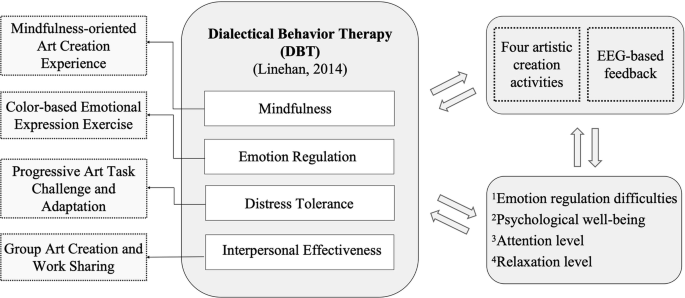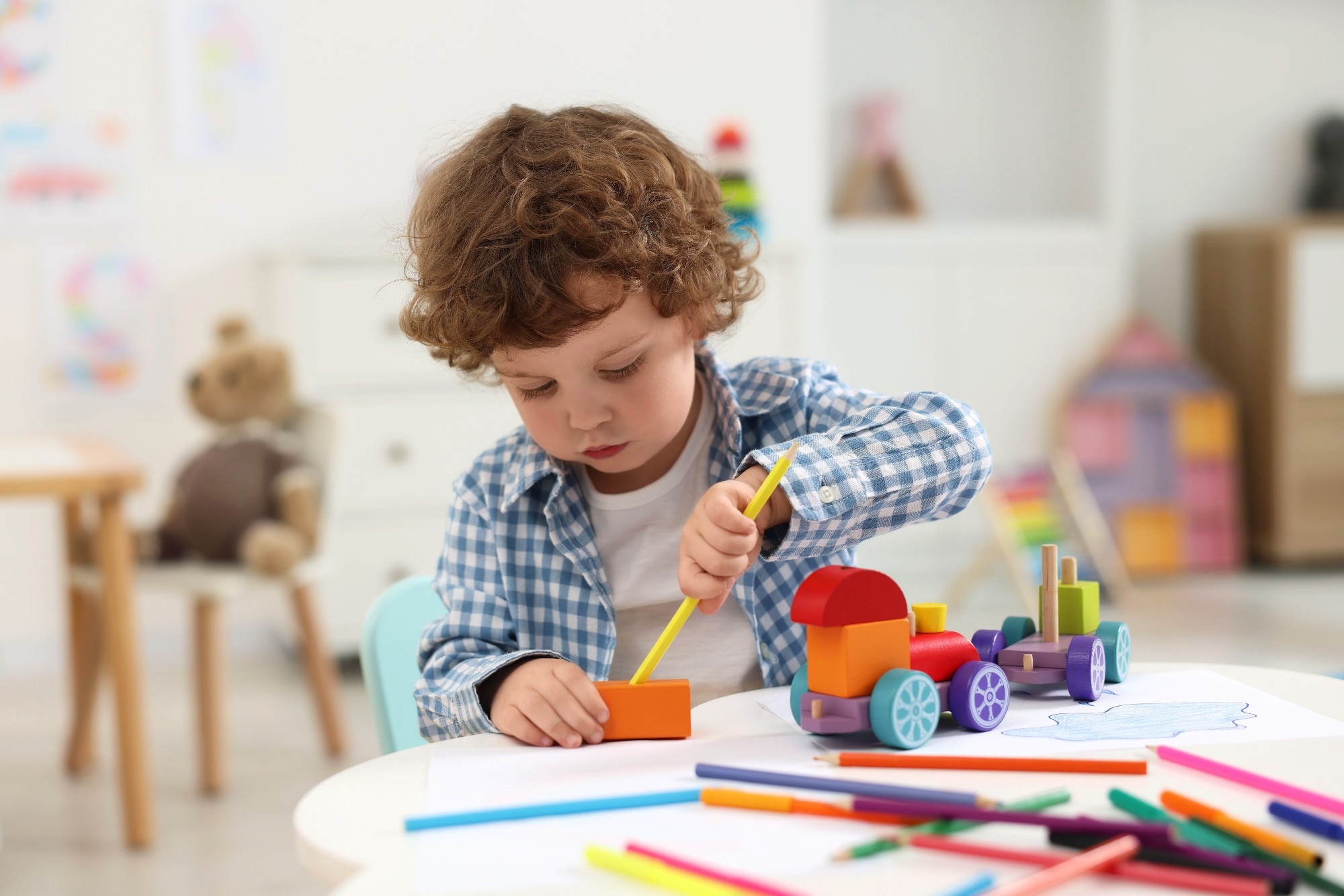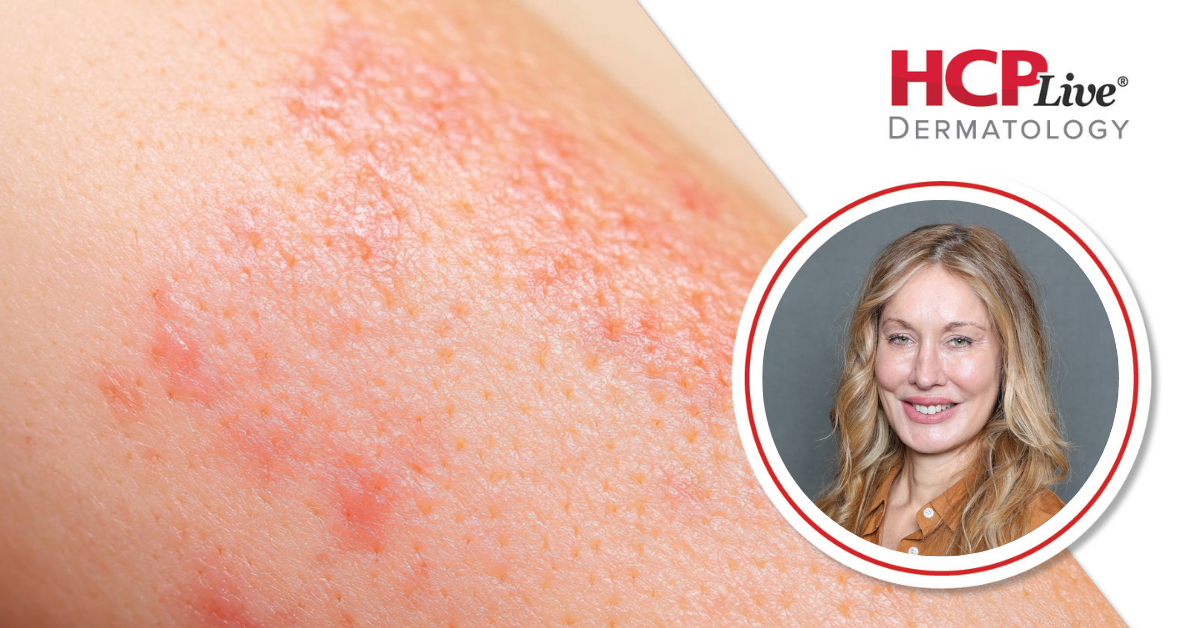Effects of electroencephalography-based art therapy on emotion regulation difficulties, psychological well-being, relaxation and attention levels among college students

Art therapy and emotion regulation
Art therapy, as a professional intervention method integrating creative artistic processes with psychotherapy, has gained widespread attention and application in the field of mental health in recent years (Sajnani et al., 2020). According to the American Art Therapy Association (AATA), art therapy employs creative processes and artistic media to explore emotions, reconcile emotional conflicts, foster self-awareness, and improve psychological well-being (McCann et al., 2022). Since its development in the mid-20th century, art therapy has evolved from simple artistic expression to a systematic therapeutic method. Its theoretical foundation integrates perspectives from multiple psychological schools, including psychoanalysis, humanistic psychology, and cognitive-behavioral theories (Zubala et al., 2021).
Substantial research has demonstrated the positive effects of art therapy in emotion regulation. Neuroscience studies indicate that artistic creation activities significantly activate the prefrontal cortex and limbic system, areas closely associated with emotional processing and regulation (Bosman et al., 2021; Gable et al., 2021). Through artistic expression, individuals can achieve emotional externalization and reconstruction, a process that not only facilitates the release of negative emotions but also cultivates the generation and maintenance of positive emotions (Kaufmann et al., 2023). A recent meta-analysis revealed significant therapeutic effects of art therapy in mental health interventions, with results showing the most pronounced effects on depressive symptoms, followed by anxiety symptom relief, while also demonstrating substantial therapeutic value in alleviating fatigue symptoms (Newland and Bettencourt, 2020).
Within higher education contexts, recent studies show that art therapy relieves academic pressure and emotional distress among college students (Tu and Fu, 2024). A longitudinal study involving 120 college students found that participants who engaged in art therapy programs showed significantly better emotion regulation abilities compared to the control group (Van Lith et al., 2021). Subsequent qualitative research further revealed that art therapy may provide college students with a space for self-expression, potentially helping them explore and integrate emotional experiences (Van Lith et al., 2022).
Despite showing positive effects, current research and applications still face several limitations. Firstly, at the methodological level, some studies suffer from small sample sizes and insufficient randomization, which affects the generalizability of research results (Uttley et al., 2015). Secondly, existing intervention programs often employ standardized procedures without adequately considering individual differences (Van Lith, 2016). Furthermore, traditional art therapy methods remain insufficient for real-time monitoring and feedback of emotional states, limiting the immediate assessment and adjustment of treatment effects (Zubala et al., 2021). Additionally, neurophysiological evidence regarding the mechanisms of art therapy remains relatively scarce, affecting the scientific explanation and theoretical construction of its therapeutic effects (King and Parada, 2021).
EEG-based emotion feedback
Electroencephalography (EEG) technology, a non-invasive neurophysiological measurement method, reflects brain functional states through recording synchronized electrical activities of cortical neurons (Niso et al., 2023). Compared to other neuroimaging techniques, EEG offers advantages such as high temporal resolution (up to the millisecond level), portability, and relatively low cost (Altaheri et al., 2023). With advancements in digital signal processing technology, EEG applications in emotion recognition and feedback have become increasingly mature, providing reliable technical support for objective assessment of emotional states (Liu et al., 2023).
The integration of neuroscience and art therapy represents a significant advancement in understanding neurophysiological mechanisms underlying therapeutic artistic processes (King et al., 2019). This approach evolved from early artistic explorations in the 1960s and 1970s (Straebel and Thoben, 2014) to sophisticated Brain-Computer Music Interfaces that enable active participation (Torres-Cardona and Aguirre-Grisales, 2022). Contemporary approaches actively incorporate brain activity as a functional component of the artistic process, which Rowland (2021) describes as “perception as media” where neural responses become both subject and medium of artistic expression.
The application of EEG technology in artistic interventions has shown particular promise in educational settings. These applications utilize interactive systems where neural signals create feedback loops between internal states and external representations (Gingrich et al., 2014), offering new ways to objectively measure and enhance traditional art therapy benefits. Advances in EEG signal processing have enabled significant breakthroughs in emotion recognition. Through time-frequency analysis and spatial feature extraction, research teams employing deep learning methods have achieved 87.44% accuracy in recognizing six basic emotions (Maeng et al., 2020). These algorithms can identify both discrete emotion categories and assess emotional intensity, with frontal beta wave (13–30 Hz) energy changes correlating positively with emotional arousal levels across various populations (Berk et al., 2016).
The design of emotion feedback systems effectively leverages these characteristics of EEG signals. Research suggests that EEG-based real-time feedback is associated with enhanced individuals’ emotional awareness through two mechanisms: immediate neural feedback provides objective references for emotional states, potentially improving emotional awareness accuracy (Johnston et al., 2010; Zotev et al., 2020); and feedback training may support changes in prefrontal cortex activity associated with emotion regulation (Dehghani et al., 2020; Mennella et al., 2017). These mechanisms form the theoretical foundation for our investigation of EEG feedback effects on emotion regulation and psychological well-being among college students.
Psychological well-being
Psychological well-being, as a multidimensional construct, extends beyond the traditional focus on emotional experiences in subjective well-being, emphasizing instead the realization of individual psychological functioning and developmental potential (Tu and Fu, 2024). Based on the integration of humanistic, developmental, and positive psychology, Ryff and Singer (2008) proposed a theoretical framework comprising six dimensions: autonomy, environmental mastery, personal growth, positive relations, purpose in life, and self-acceptance. This multidimensional model provides a more comprehensive perspective for understanding individual psychological health.
Research on the relationship between emotion regulation and psychological well-being reveals the dynamic mechanisms of psychological health development. Longitudinal studies indicate that improvements in emotion regulation abilities often correspond with enhanced levels of psychological well-being, a correlation particularly pronounced among college students (Extremera et al., 2020). Notably, when facing academic pressure and adaptive challenges, stronger emotion regulation abilities can promote individual development in the dimensions of environmental mastery and autonomy (Conley et al., 2020). Meanwhile, positive psychological well-being can, in turn, provide stable psychological resources for emotion regulation, creating a positive feedback loop.
Art therapy, as an integrative intervention approach, demonstrates unique value in promoting psychological well-being by providing symbolic and visual pathways for expression (Beerse et al., 2020). Systematic reviews indicate that the artistic creation process simultaneously activates emotional processing and self-referential psychological mechanisms, thereby enhancing individual performance in self-acceptance and personal growth dimensions (Oepen and Gruber, 2024). Particularly for individuals with limited response to traditional verbal therapy, art therapy offers an alternative pathway for promoting psychological health. Recent research further suggests that when art therapy is combined with other intervention methods (such as mindfulness training), its beneficial effects on psychological well-being are potentially enhanced (Malboeuf-Hurtubise et al., 2021).
Relaxation and attention levels
Relaxation and attention levels are among the indicators reflecting the effectiveness of art therapy (Kang et al., 2021). Artistic creation is inherently a process requiring psychological relaxation while maintaining attention level—this state is both a prerequisite for artistic expression and a foundation for psychological therapy. When individuals achieve higher relaxation levels, defense mechanisms naturally decrease, facilitating the acceptance and expression of inner experiences; simultaneously, sustained attention levels provide necessary cognitive resources for deep psychological processing (Pénzes et al., 2023).
The relationship between relaxation level and art therapy manifests through both neurophysiological and psychological mechanisms. From a neurophysiological standpoint, limbic system activity tends to stabilize as relaxation levels increase, providing a physiological foundation for emotional reintegration (Raad et al., 2021). From a psychological perspective, a high relaxation level creates a safe psychological space for individuals, allowing them to direct their attention toward internal experiences. The establishment of this psychological space serves as a fundamental basis for emotional catharsis and reconstruction during the artistic creation process. Attention level reflects the degree of psychological engagement in artistic creation (Yang et al., 2024). At higher attention levels, the brain’s executive control network becomes fully activated, simultaneously suppressing the automatic generation of negative thoughts while promoting the allocation of cognitive resources toward creative expression (Beerse et al., 2020). During artistic creation, heightened attention levels coincide with enhanced self-referential processing, and this deep processing helps individuals establish more stable emotion regulation patterns (Khosravi et al., 2020).
In recent years, portable EEG equipment has provided reliable tools for objective measurement of relaxation and attention levels. Commercial EEG equipment, such as Muse, BrainLink, and NeuroSky, achieves real-time monitoring through frontal lobe acquisition using single-lead electrodes (Fp1, Fp2 positions) (Dadebayev et al., 2022). For relaxation level measurement, this equipment primarily analyzes changes in alpha wave energy. When individuals reach higher relaxation levels, alpha wave energy significantly increases in the occipital and parietal regions, with these changes reliably captured through frontal leads. For attention level measurement, the equipment uses the ratio of beta waves to theta waves as a core indicator. This ratio calculation is based on extensive research demonstrating enhanced beta wave activity and reduced theta wave activity during high attention levels. After preprocessing EEG signals through filtering and artifact removal, this equipment can convert complex neurophysiological indicators into standardized scales of 0–100, providing quantifiable and reliable metrics for monitoring relaxation and attention levels during art therapy (Niso et al., 2023).
Integrated intervention framework
This study adopts dialectical behavior therapy (DBT) as its structured intervention approach, constructing a systematic educational model through the integration of art therapy and EEG feedback. This integration is based on the following foundational principles: First, DBT’s four core modules (mindfulness, emotion regulation, interpersonal efficacy, and distress tolerance) provide a structured framework for intervention; second, art therapy’s non-verbal expressive characteristics serve as an ideal vehicle for practicing DBT skills; third, EEG feedback provides immediate, objective physiological indicators for intervention effectiveness.
This integration of art therapy with neurofeedback reflects the evolving landscape of art-neurology interactions. Miranda and Brouse (2005) established foundational principles for interfacing brain signals with artistic expression, while more recent work by Ahmedien (2017) has demonstrated how neural responses can function as active components within interactive artistic processes. These approaches align with our framework’s goal of creating bidirectional relationships between participants’ internal neural states and their external artistic expressions. Building on these precedents, the DBT-based intervention design incorporates the principle that physiological feedback can strengthen the connection between internal emotional states and their external expression through art, a mechanism that has been successfully demonstrated in previous interactive art research.
In the mindfulness dimension, art therapy serves as the intervention medium. This choice is based on two practical foundations: First, artistic creation inherently constitutes a deep mindfulness practice, requiring individuals to focus their attention level on the present creative experience (Jablonsky, 2022); second, the sensory engagement and emotional experience during artistic creation directly align with DBT’s emphasis on “here and now” awareness. The research uses single-channel EEG equipment to monitor participants’ attention levels in real-time to evaluate state changes, providing quantifiable physiological data for validating mindfulness practice.
In the emotion regulation dimension, the research implemented systematic art creation tasks. Based on Gross’s (2015) process model of emotion regulation, each intervention activity incorporates specific emotion regulation strategies, such as using color selection to promote emotion identification and compositional changes to achieve emotional reappraisal. The research uses the difficulties in emotion regulation scale (DERS) to assess intervention effectiveness, while simultaneously monitoring emotional state changes through relaxation levels collected by EEG equipment. This real-time physiological feedback facilitates participants’ development of metacognitive awareness of emotional states, thereby enhancing their emotional awareness and regulatory capabilities.
In the interpersonal effectiveness dimension, the research innovatively implemented group art creation formats. Participants practice DBT interpersonal effectiveness skills during collaborative creation and artwork sharing, such as expressing needs, maintaining relationships, and preserving self-worth. EEG feedback provides physiological state indicators during this process, helping participants objectively evaluate their state changes during social interactions. These physiological indicators enable participants to better identify and regulate their own states.
In the distress tolerance dimension, the research employs progressive artistic creation difficulty settings. Through calibrated adjustments to the challenge level of creative tasks, participants develop tolerance for uncertainty and frustration. EEG feedback serves a dual role in this process: monitoring participants’ physiological states to prevent excessive stress responses, and helping participants identify and maintain adaptive states through immediate feedback. This physiologically guided progressive training helps participants enhance their distress tolerance abilities in a controlled environment.
As shown in Fig. 1, the intervention framework, with DBT as its core, includes four practice modules: mindfulness, emotion regulation, distress tolerance, and interpersonal effectiveness. The left side presents four specific art activities are designed as practice vehicles, including mindfulness-oriented art creation experience, color-based emotional expression exercise, progressive art task challenge and adaptation, and group art creation and work sharing. The right side integrates an objective assessment system, evaluating effectiveness through indicators such as emotion regulation difficulties, psychological well-being, relaxation and attention levels.

A three-part practice framework integrating specific art therapy activities (left), DBT core intervention modules (center), and assessment components (right). The upper right shows the dual implementation approach combining four artistic creation activities with EEG-based feedback. The framework illustrates how specific art activities align with the four DBT modules (mindfulness, emotion regulation, distress tolerance, and interpersonal effectiveness), and how these components connect to outcome measures: emotion regulation difficulties, psychological well-being, attention level, and relaxation level.
link






